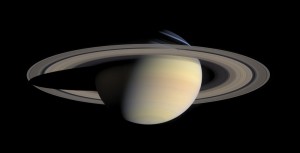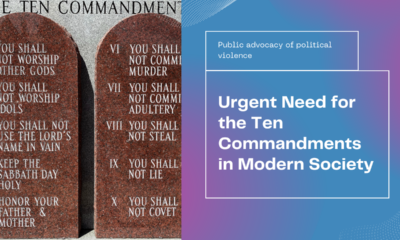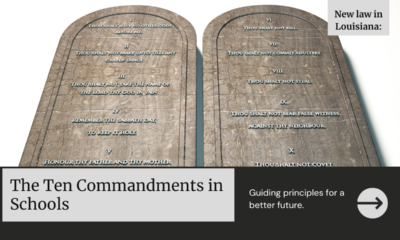Creation Corner
Creation Day 4: Age of the Universe

The universe is younger than it seems. The Big Stretch on Creation Day 4 explains much of this. But did light also slow down?
Has light slowed down?
The speed of light in a vacuum is 299,792, 458 meters per second. With nine digits, that’s a very precise value. The more precise your measurements, the easier it is to tell whether a value has really changed, or only seems to have changed because your ruler, clock, scale, or whatever you use, is off.
Barry Setterfield and Trevor Norman looked at 164 published values of the speed of light over 300 years. He found that light has slowed down, and is still slowing down. Walt Brown (In the Beginning) checked his math, and the math of other astronomers (Gerald Aardsma and Robert Brown) who disputed Setterfield. Alan Montgomery checked Setterfield’s math independently and calculated a quadratic or “square-function” curve that would best fit the numbers. His conclusion: yes, light has slowed down, and experimental error cannot explain it. The published values are too precise for that. In fact, light has slowed down one percent in the last 300 years.
What that means
The speed of light has the symbol c (for “constant”). But Einstein never said it was constant. He said it was independent of frame of reference. That is, the speed of light is the same, whether you are standing still relative to the lamp, or moving toward or away from it. You could even be speeding up or slowing down; that makes no difference.
In fact, the speed of light is not a fundamental constant of nature. James Clerk Maxwell found that it depends on the electrical and magnetic properties of whatever medium it flies through. And those depend on another value, called the fine-structure constant. This value (symbol α, value 1/137.0359) determines electric permittivity, magnetic permeability, the charge on a single electron or proton, the Planck or quantum-energy “constant,” and the speed of light. (In fact, the fine-structure constant varies directly as the speed of light, and in direct proportion.)
The problem: even the fine-structure constant has not stayed the same. It changes over time, and is even different in different parts of the sky.
Obviously if the speed of light were significantly faster at creation than it is today, the universe would seem older only because light from far-off objects took less time to reach the earth. But the fine-structure constant also affects atomic nuclear changes. A declining fine-structure constant would explain why cesium clocks (that “tick” from a particular transition of cesium-113) seem to shoe that the year is getting shorter over time. That cannot be. If it were, that would mean that gravity was getting stronger. Gravity is an entirely different fundamental constant, and no one has observed anything to imply that gravity is strengthening. Therefore, the atomic clocks are running slow. And if atomic clocks run slow, so does radioactive decay. That would mean that radioactive decay was faster earlier in history than it is today.
Three hundred years might not be long enough to set a trend that would carry back to Creation Day Four. Setterfield and others suggest that light once few a million times faster than it does today. If true, then if radioactive elements were part of the earth’s crust at creation, the radioactive emissions would have killed all of life. (Of course, if God made the earth without radioactive materials, and those materials formed only later in history, this is a moot point.) Walt Brown suggests another test: that far-off double stars, galaxies, and larger objects should spin far more slowly than they should, as if we were watching them in slow motion—extreme slow motion. Today most astronomers have seen the opposite effect: fast rotation, that they sought to explain with “dark matter.” But the Hubble Space Telescope, or more likely its slated replacement, might see large objects rotating in slow motion as it looks deeper into space (and time).
The Big Stretch
Secular astronomers have known since 1998 that the universe is expanding, and is speeding up, too. Either something is pushing the universe apart, or something pulled the universe to its present size. The only push would have to come from “dark energy.” No one knows what that “dark energy” is, but it would have to speak for three-fourths of the total mass-energy of the universe if it existed.
Moshe Carmeli predicted the accelerated universe in 1996. John Hartnett (Starlight, Time and the New Physics) later refined Carmeli’s model by accounting for the mass in the universe. He concluded that the universe would look old only because it had stretched ten trillion-fold on Creation Day Four. The Big Stretch did not accelerated light but it dilated time. So when the Bible says that the earth is only 6016 years old (give or take a year or two), it means by local clocks.
The truth about Creation Day Four
The truth probably lies somewhere in the middle. Light need not have slowed down tremendously if the universe stretched. The Big Stretch alone could explain why we see far-off objects after only six thousand or so years had passed (by our clocks and calendars).
That does not mean that light did not slow down. Now even some secular scientists admit that a key constant, that the speed of light depends on, has changed over time. How much it changed in six thousand years, we might never know.
Uniformitarianism says that any time-dependent function that accurately describes a change today will always work in the past. Or to quote an old uniformitarian proverb, “the present is the key to the past.” But it’s not safe to assume such a thing, because conditions that set the rules today might not have been the same in the past. That applies equally to speed-of-light “decay” as to radioactive decay. So light has slowed down, and is slowing down. But whether it has slowed down at the same rate is not settled.
Problems with a great age of the universe
Conventional astronomers today assume that the universe is 13.7 billion years old. They base that on the distance of the farthest objects they have thus far seen. They calculate that distance at 13.7 billion light years.Therefore, assuming an unchanging fine-structure value, hence an unchanging speed of light, the universe is as old as it took the light to travel from the far reaches of the universe to the earth.
But, as Brown observes, conventional astronomers have their own problems with saying consistently how old the universe is.
- Astronomers see stars that, by their own rules, must have existed for sixteen billion years.
- Some of those stars contain heavy elements, meaning heavier than helium and as heavy as iron. Again by their own rules, this takes time.
- Saturn’s rings, if they formed by a collision between a comet and a moon, must have formed thirty billion years ago by conventional rules.
- On the other hand, Saturn’s rings, with their intricate patterns, could not have lasted much longer than 100 million years.
The first two problems resolve easily with a young-universe model. The other two (Saturn’s rings) depend on another event, one that filled the solar system with many comets at once, so that at least one wold collide with one of the large moons of Saturn to make the rings.
Conclusion
These are some of the reasons why the universe is much younger than conventional astronomers assume. The universe began with the earth on Creation Day One, and with the other objects (most of them) on Creation Day Four.
Related:
[amazon_carousel widget_type=”ASINList” width=”500″ height=”250″ title=”” market_place=”US” shuffle_products=”True” show_border=”False” asin=”1878026097, 0890515077, 0310234697, 0875523382, 0890511586, B002RBHDFK, 0949906689, 0890513600, 089051416X, 0890515050″ /]
Terry A. Hurlbut has been a student of politics, philosophy, and science for more than 35 years. He is a graduate of Yale College and has served as a physician-level laboratory administrator in a 250-bed community hospital. He also is a serious student of the Bible, is conversant in its two primary original languages, and has followed the creation-science movement closely since 1993.
-

 Executive4 days ago
Executive4 days agoSecret Service chief gets no solace
-

 Executive3 days ago
Executive3 days agoWaste of the Day: Louisville Taxpayers Pay Nearly $600,000 For Empty Building’s Maintenance, Security
-

 Guest Columns4 days ago
Guest Columns4 days agoFear Itself: Democrats’ Favorite Strategy Caused Their Current Chaos
-

 Executive3 days ago
Executive3 days agoWhere is Joe Biden – or Jill?
-

 Executive1 day ago
Executive1 day agoWaste of the Day: Throwback Thursday: Cities Used Crime Prevention Funds on Soccer Games, Paper Shredding
-

 Civilization4 days ago
Civilization4 days agoBuild Iron Dome in the United States To Prepare for Israel’s Worst Day
-

 Executive2 days ago
Executive2 days agoFacile and politically motivated suggestions
-

 Executive4 days ago
Executive4 days agoThe Emerging GOP Plan To Beat Kamala Harris
















What’s your source for both the first and second astronomical claim?
Are you at all aware of any of the OTHER research other than one cherry-picked study by AiG that easily accounts for a moon breaking up and forming Saturn’s rings during its formation (such as by Robin Canup — surely one example I bring is just as good as the one by AiG)?
And are you aware of any of the research in the last decade that clearly shows Saturn’s rings can have their structure as seen today but still be ancient, such as the paper by Robbins et al. in 2010? The “100 Myr” number often quoted is based on a simplistic model from Voyager data from over three decades ago and does not represent the current state of the research.
Ah, on closer inspection I see you’re citing an article that cites a paper from 1985 on globular cluster ages. Too bad for you this was a problem solved about 10-15 years ago. It appears as though you’re citing problems that aren’t problems. It’s kinda like you’re saying now, in 2012, that it’s impossible for a boat to travel faster than 10 km/sec, citing a source from ancient Greece, ergo God created modern boats because some guy said at one time that boats can’t travel as fast as we observe them to now.
Wow. Scientists really are getting more help about the validity of their positions from your foolish assertions than from their own experiments.
“Saturn’s rings, if they formed by a collision between a comet and a moon, must have formed thirty billion years ago by conventional rules.”
Nonsense. That’s not what Ip’s paper said at all, is it? To be fair the wilful misrepresentation was carried out by AiG and not by you, but it’s still a wilful misrepresentation. Saying that a collision of that type would happen less than once in every 30 billion years is very, very different from saying it happened 30 billion years ago. In addition, Ip’s paper was only covering the disintegration of moons by collision. He wasn’t considering other things that can rip a moon apart, such as tidal forces.
As for Setterfield’s nonsense about c decay, I’m surprised ANYONE still has the neck to quote it. You do know that Setterfirld cherry-picked his data and misrepresented one of his priimary sources, don’t you?
If you’re at all interested I have plotted a graph of c using Setterfield’s own data set, removing only those measurements that are known to have not been made in a vacuum. It shows the measured values of c varying wildly around the correct value, with the variation decreasing as time passes until by the 20th century the measurements have settled very close to the accepted value. Every measurement since 1955 has been within 1 km/s of the accepted value. Every measurement since 1960 has been within 1 m/s of the accepted value. This is exactly what we would expect to see if our ability to accurately measure c has been improving. Setterfield conclusively failed to show c decay. I can email you the graph if you like.
Go ahead and send them. Let’s see whether you can show that c-decay is a non-starter. (Be advised: not every creation advocate accepts any changes in c or alpha or any other related constant. Nor would the invariance of these quantities falsify the narrative.)
Yes. I can certainly demonstrate that. Unlike Setterfield I used the whole data set with the exception of readings known to have been conducted in air (and excluding those actually makes it more likely to support Setterfield’s conclusions, by removing lower old values) whereas Setterfield cherry-picked 120 out of 207 data points. I used 188.
What the data shows is that older figures are less reliable – which is only to be expected given the methods that they were obtained by – but that by the mid 19th century most figures were falling fairly close on either side of 299,792.48 km/s and by the mid 20th century they were all more or less bang on that figure, with no decline visible at all.
I will now email you an Excel speadsheet of the data. Feel free to reproduce it on here and to comment publicly on it.
“not every creation advocate accepts any changes in c or alpha or any other related constant.”
It would be more accurate to say that hardly any do. c decay in particular is regarded as toxic, because it’s been shot so thoroughly full of holes.
Any comments on my graph?
You’ll likely be one of the first to know.
Well, you’ve had ten days to check my figures. Still believe in c decay?
“Some of those stars contain heavy elements, meaning heavier than helium and as heavy as iron. Again by their own rules, this takes time.”
*sigh*
The bigger the star the faster it burns its fuel. Also, and not coincidentally, the bigger the star the heavier the elements it can use as fuel and therefore the heavier the elements it can produce in its core. Any star capable of burning silicon and producing iron is going to explode as a supernova. And the lifespan of stars capable of doing this is under 10 million years, which is pretty trivial.
The 13.7 billion year age is based off of far more than how far we can see. We also use ratios of parents/daughters in long-lived isotopes (which you refuse to believe for reasons tossed aside by anyone who actually studies such things) of elements, stars, and galaxies. Furthermore, we use numerical models to constrain the age based off what we know about production rates of elements within stars, and how that compares to what we observe. All of these methods fall into the same order of magnitude of one another.
As to your “problems” with an “old” universe
1.Astronomers see stars that, by their own rules, must have existed for sixteen billion years.
The first article Dr. Brown cites with regard to this is from Scientific American (see below for more about this), which is difficult to find online, and really doesn’t matter since its not peer-revied. The other source he uses, from Nature (also see below), doesn’t really agree with what he is arguing. Apparently he only read the first couple paragraphs, and missed the rest of the article, where it explains how we could be seeing galaxies that are older than we expect them to be. Also, I should note that this is not a scientific paper, but a news article. Its very interesting that Dr. Brown seems incapable of citing anything from the peer-reviewed literature, and instead takes his information from news blurbs written about already published papers. More on this below.
2.Some of those stars contain heavy elements, meaning heavier than helium and as heavy as iron. Again by their own rules, this takes time.
Yes it does. Several billion years of time. Whats your point?
3. Saturn’s rings, if they formed by a collision between a comet and a moon, must have formed thirty billion years ago by conventional rules.
The source you use here, Answers in Genesis, doesn’t mention where exactly they obtained that 30 billion number. Dr. Wing-Huen Ip’s sublications page (link to astro.ncu.edu.tw) doesn’t include a paper about the age of Saturn’s rings. Regardless though, Saturn has over 10 moons with a diameter larger than 100km, so Im not sure what the point is they are trying to make
4. On the other hand, Saturn’s rings, with their intricate patterns, could not have lasted much longer than 100 million years.
This seems to be the prominent current belief. If it were true, it means that we just happen to live at a time when Saturn does have rings, and through most of its history it lacked them.
One thing I just noticed is Brown’s cited references:
Science and Earth History (textbook)
Scientific American
Nature (x7)
Science (x3)
Discover
Origin and Evolution of the Elements, Vol. 4 (textbook)
Astronomy
Science News (x2)
Everybody knows that Science and Nature publish papers with a high shock value. That is, they are on the fore front of scientific research but usually contain data that is dubious at best. Don’t get me wrong, they ar estill highly respected, but I rarely cite papers from either of them, and when I do I take great care to check over their methods and data. As for the pother citations Dr. Brown uses, Astronomy, Science News, and Scientific American are not scientific journals. None of them are peer-reviewed. They are magazines meant for distribution to the public, and only contain brief discussion of results, completely leaving out methodology and actual data. The textbooks may contain credible information, but that is highly dependent on how much of them is pulled from pre-existing peer-reviewed literature.
If Dr. Brown were to cite “Icarus”, “Space Science Reviews”, “Astronomy and Astrophysics”, “Earth and Planetary Science Letter”, etc. than that would be a different story. But a refusal to use data from actual respected journals in the subject area strikes me as very odd.
If you would like to review Dr. Brown’s sources yourself, shoot me an email with citations and I can download and forward them to you. I have journal access to both Nature and Science.
“Yes it does. Several billion years of time”
Not necessarily. A giant star can go from a huge ball of hydrogen and helium to a supernova blasting iron all over the place in five million years. Bigger stars = faster fusion + heavier elements. Any star massive enough to make iron isn’t going to last billions of years.
[…] Creation Day Four: Age of the Universe […]
[…] Creation Day 4: Age of the universe […]
Any comment on the implications of e=mc^2 for c decay?
[…] Creation Day 4: Age of the universe […]
[…] Reprinted from Conservative News and Views This entry was posted in Apologetics by Terry Hurlbut. Bookmark the permalink. […]